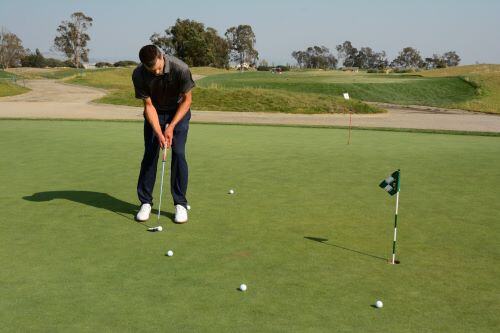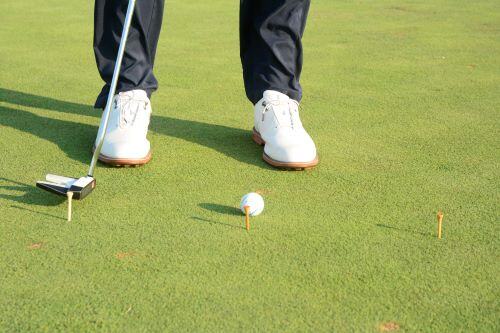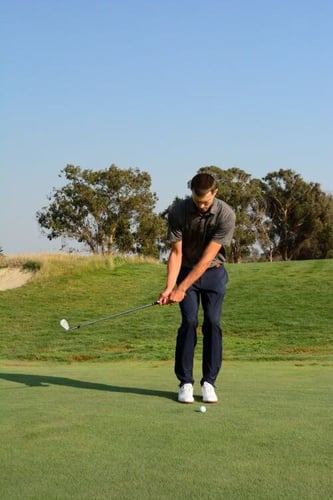
BY ALEX HULANICKI
First appeared in Fall 2021 Golf Magazine
ON THE FAR-LEFT CORNER OF THE DRIVING RANGE AT CORICA PARK IN Alameda, Brad Marek acts more like a high school counselor than a teaching pro. At one end, he’s making fine adjustments on a female student’s practice swing while her father quietly watches. As she continues to “rehearse” the swing, four elite junior golfers – two girls and two boys – saunter to the tee and start bantering about recent matches and plans for the fall. Marek acknowledges them but continues to focus on his pupil. He finishes the swing lesson, then turns to the foursome: “Ready for the challenges over seven holes before sunset?” he asks.
The “challenges” are part of what could be considered an Advanced Placement course for these youngsters. Marek specializes in coaching elites, counseling them on course strategy, and mental toughness and consistency. He also helps them in the college recruitment process.
On the first tee, Marek tells them it will be a half-stroke penalty if they drive the ball on the left side of the fairway. On the approach, he says, “nothing left of the flag.” On the green, he gathers the balls then throws them off the fringe. “I’ll do 10 push-ups if you all chip the ball by bouncing short of the green and roll it up to the cup inside 5 feet,” he says. All four chip flawlessly. Marek is down 10 push-ups, but suggests “double or nothing on the next hole.”
The challenges continue, the high-schoolers repeat shots, try new challenges and finish before sunset. For 2020 Junior Tour of Northern California Boys’ Player of the Year Baron Szeto, who already had his bags packed to move the next day to California Polytechnical State University, San Luis Obispo, as a freshman, the walk was more like his graduation march. Szeto, who won the Alameda Commuters at Corica Park in April, didn’t have a valedictory address, but in honor of his mentor, he dropped to the fringe on the last hole and did 10 push-ups. He was ready for his next challenge – college golf – as Marek wished him farewell.
“Golf is played on the golf course,” Marek says. “You can’t do it only on the practice tee and putting green. You have to challenge yourself in practice on the course.” Marek’s drills with the juniors can be applied to golfers of all kinds, especially around the greens. Consistency in the lag putting stroke comes from mirrored back swing and follow-through. Confidence in putting from inside 8 feet from the cup can grow with the spiral drill. And golfers fearing the dreaded chunk of a chip should keep their hands aligned with the ball to let the loft of the wedge do the work, says Marek, who at 6-foot-6 towers over his students.
THE SPIRAL MAKES GOOD PUTTS VIRAL
Great putters consistently hole putts from inside of 8 feet. Practicing them in a challenging fashion can really improve your ability to make them when it matters. “With all of my junior students, I try to incorporate drills that add pressure towards the end of the drill in order to complete it,” Marek says. The spiral drill involves six balls fanned out from 3 to 8 feet, increasing in one-foot increments. Spread them out so that none of the putts are on the same line. The drill starts at the 3-foot putt. If made, the player moves back to the 4-foot putt, then the 5-foot putt, and so on. If at any point the player misses, they restart the drill at 3 feet. The drill is complete when you’ve gone from 3 to 8 feet without missing. The end of the drill has some pressure added since a miss will force you to start over at 3 feet. Using your full routine on this drill helps simulate on-course situations even more.
MIRROR THE BACKSWING AND FOLLOW-THROUGH FOR BETTER PUTTS
Golfers with great speed control on putts tend to have a very consistent stroke tempo, Marek believes. To improve lag putting, he encourages his students to try to make their backswing and follow-through (A) a similar length on each side. “Obviously, the stroke will be longer on both sides the longer the putt, shorter on both sides on shorter putts. This drill changes what is a typical pattern: a short backswing and a very long follow-through, resulting in a “jump” or “hop”(B) off the face of the putter, leading to very inconsistent speed control,” Marek says. “A consistent length on backswing and follow-through will result in the ball coming off the putter face at a more consistent speed.”
DUMP THE CHUNK: IMPROVE YOUR FINISH TO IMPROVE YOUR PITCHES
Most amateurs when they chunk a chip or pitch tend to pull on the handle end and try to get even more shaft lean the next time around. All this does is expose the leading edge of the clubhead more, which is the part of the club that digs into the ground. “By focusing on the proper finish position, the golfer should be able to deliver the club with less shaft lean and with the bounce (the back end of the club that does not dig) exposed through the hitting area,” Marek says. “The finish position I want to see my students looking for is the butt end of the club no more than 6 inches away from the body, with the butt end of the club pointing around their belt buckle.” Adds Marek: “Thinking about a finish position is a very different concept for most players. They have spent years trying to hit at the ball as opposed to swinging through to a proper finish position. This concept change can result in drastic improvements in a short period of time.”